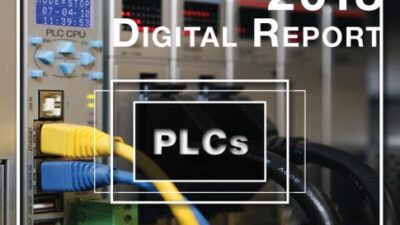Machine Safety
CUSTOM ADVERTISING NEWSLETTER
To SUBSCRIBE | To UNSUBSCRIBE | CHANGE YOUR PROFILE | PRIVACY POLICY
December 13, 2006
Top Story
Intelligent, integrated safety delivers competitive advantage Educate personnel at every level—not just the plant floor—about changesin safety regulations and systems.
Traditionally, manufacturers have viewed plant automation safety as a necessary evil – a cost that had to be borne to ensure the welfare of workers and the overall health of the business. But with recent advances in safety system technology as well as harmonization of international standards, today’s safety systems can be sources of competitive advantage.
As the ARC Advisory Group recently wrote, “A well thought-out intelligent safety strategy should not only protect humans, machines and the environment, but also support business benefits, such as increased productivity, improved machine efficiency and reduced downtime.”
The changing nature of plant safety automation becomes apparent when one views the way safety was implemented in plants three decades ago and the way it is done today. Thirty years ago, the advent of PLC control changed the way engineers designed and wired machines, but these early controllers simply were not reliable enough to be used in safety applications. Consequently, European and North American regulators excluded PLCs from playing a role in such systems. Instead, manufacturers were forced to implement separate, hardwired systems that would operate independently. These systems, installed as an afterthought rather than as an integral part of a plant, often proved costly and inflexible. In addition, the multiplicity of machine manufacturers and a patchwork quilt of international standards created a safety system design and marketing nightmare for OEMs, further adding to overall costs.
Standards come together
Fortunately, however, the bad old days are in the rearview mirror. The increasing globalization of the manufacturing industries has led to the harmonizing of safety standards, such as IEC 61508, EN 954-1, IEC 62061, IEC 60204 and EN/ISO 13849-1. In addition, controllers, instrumentation and networks that are certified for safety as well as for control and monitoring are available, thus reducing or eliminating altogether the need for separate hardwired safety systems.
For example, PROFIBUS is among the world’s most widely deployed industrial networks, but it was not certified for safety functions- meaning, users would have to create a separate network that met standards for reliability. Today, however, users can implement PROFISAFE, a safety-certified version of the network that also meets control and monitoring needs. Likewise, users can implement safety-certified PLCs, machines and other control elements that eliminate duplication on the plant floor.
In addition to savings on equipment, a well-designed safety infrastructure can yield other benefits, including:
Shorter downtime . Operators can get operations running quickly after a trip because unplanned shutdowns can be analyzed more intelligently.
More productivity, reduced time wasters . For example, previously, operators could perform machine-related tasks such as changing tools, cleaning, alignment, etc., only if power were completely removed from drives. With safe drives, however, full power down is not necessary. Similarly, recent changes to NFPA and IEC regulations allow the use of programmable devices for emergency stops. This means machines can be brought to controlled stops by programmable means, enabling a faster recovery. It also allows machines to maneuver to safe positions, allowing for manual corrections of problems, such as product jams.
The experiences of KUKA, a producer of automated/robotic production systems for car bodies and chassis, illustrate the value of a modern safety system implementation. At its Toledo Productions Operations assembly plant, which produces bodies for Daimler Chrysler, KUKA realized an 85 percent reduction in the number of relays, local I/O, terminal blocks and cable connections through the implementation of an integrated system. Engineers are able to use a single interface for design and control schemes. In addition, the flexibility of the system enabled KUKA to move safety code from one system to another quickly, reducing commissioning time.
Benefits of a safety lifecycle assessment
The greatest benefits to users can occur when automation safety is implemented, not as an afterthought, but as an integral element of plant design. To maximize safety effectiveness and to realize the greatest business gains, companies must conduct a generalized safety lifecycle assessment, usually conducted by a third party specializing in such studies. A typical study includes:
A quantitative review of the process and related hazards to determine the level of risk associated with them.
Design and verification phases, which include equipment selection, architecture selection and test frequency.
Operation and maintenance phases to ensure that the system is used in such a manner that its effectiveness is not diminished.
In addition, companies must commit themselves to educating personnel at every level—not just the plant floor—about changes in safety regulations and systems. While plant floor personnel are most directly affected by safety, employee injuries, lawsuits, costs and other issues that affect the entire company also come into play.
An important step manufacturers can take toward educating themselves on safety systems and processes is to attend “Safety—Uncover the Competitive Advantage,” a 2 hour experience where industry experts provide the education and tools needed to turn machine safety into a competitive advantage. To learn more visit www.safetythemovie.com . Brought to you by Siemens.
Return to top



